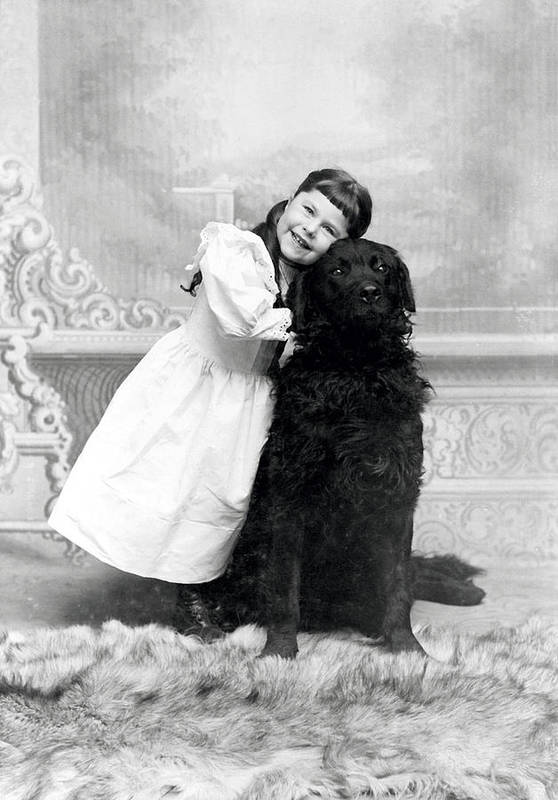
The Flat-Coated Retriever’s name might lead someone unfamiliar with the breed to assume that such a dog’s coat should be – (wait for it) – flat. In fact, the AKC breed standard does state that the ideal coat is straight and flat lying, but adds that a slight waviness is permissible. The United Kennel Club breed standard also states that “some wave is allowable,” while the FCI standard asks that the coat be “as flat as possible.” To an outsider, this might seem like allowing white on a fictitious breed named the Black Headed Spaniel. Is the Flat Coated Retriever’s coat flat or isn’t it?
To answer this, we visit Great Britain in the the mid-to-late 1800s. The shotgun had been invented, and subsequent improvements such as the percussion lock device made wildfowling increasingly popular. Now hunters could shoot birds, but now they also needed to find the birds that had been downed, and this is where retrievers come in. The Flat-Coated Retriever was most probably a response to a growing sport, particularly among landed gentry.
The flurry of maritime activity between Newfoundland and England saw dogs being bought and traded to fill this niche, and some cynologists believe that all modern retrievers developed from the dogs brought over from Newfoundland. By the mid century, there were different lines of retrievers breeding true, and one of them was the Wavy Coated Retriever, the early name for the Flat-Coated Retriever. We don’t know why Sewallis Evelyn Shirley, the first President of the Kennel Club in England, sought to flatten the coat, or even if he meant to while fixing breed type given that sportsmen assumed that a flatter coat would be less resistant to water, thorns and thick vegetative debris.
It was probably a moot point because by the l880’s, all the prevalent “types” that had gone into the breed were thoroughly combined, and they included setters, spaniels, maybe the collie, and Shirley’s black retrievers from his father’s kennels at Ettington Park. In 1881, Vero Shaw wrote about the Flat Coated Retriever in his “The Illustrated Book of the Dog,” “This dog is admittedly a cross breed of very recent origin, and is popularly, and we believe correctly, believed to be a cross between the Setter and the Labrador dog.”
One must surmise, then, that while the breed’s name underscores the “flatness” of the coat, breed standards mentioning waviness is an allowance for the appearance of genes from long ago, and a tacit acknowledgement that some dogs’ coats may have a tendency to wave.
Image: Vintage American photograph circa 1890 of a happy young girl hugging her Flat-Coated Retriever is offered by by Historic Image and available for purchase here.
